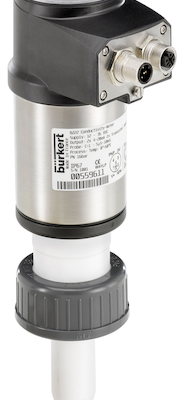
How does a surface acoustic wave sensor work?
Surface acoustic wave sensors are used in a number of very specific, niche applications extremely successfully, including for the measurement of a flow within a pipe. We take a look at how surface acoustic wave sensors work, why they are ideal for measuring flow and how Burkert have used the technology in their FLOWave flow meter.
How does a surface acoustic wave sensor work?
Where a material demonstrates an element of elasticity, any acoustic wave that travels along its surface can be expected to show an amplitude that decays exponentially in line with its depth into the material. Surface acoustic wave sensors take advantage of this phenomenon and use transducers to send an acoustic signal which travels through the material and is subsequently received by other transducers.
By using a series of these surface acoustic waves and sensors, it is possible to triangulate the signal and interpret the complete information (including amplitude, frequency and runtimes as well as the type of liquid and diameter of the pipe) to establish the flow rate of the material. The difference between the time of propagation in each direction is proportional to the flow.
Why are surface acoustic wave sensors great for measuring flow?
The advantage of flow measurement through surface acoustic wave sensors is that they can be placed on the outside of the pipework. This provides several advantages; firstly, because the measurement device does not have to be placed within the flow, there is no interruption to the flow itself. Secondly, because the sensors do not come into contact with the media, they are ideal for hygienic environments because there is no opportunity for the measurement devices to contaminate the flow, nor for the media flow to damage the sensors.
An additional advantage is the accuracy of the measurement; this technology leads to extremely reliable and precise results for both flow and temperature, even for very low flow rates.
Unlike other technologies used to measure flow, surface acoustic wave technology is not affected by vibration, magnetic or electrical issues or poor conductivity.
How does a surface acoustic wave sensor work in the FLOWave flow meter?
Burkert’s FLOWave measures the flow of a liquid by innovatively applying the surface wave acoustic sensor technology described above to flow meters.
Ideal for CIP and SIP processes, the FLOWave flow meter has been developed for hygienic environments where accuracy is critical and the ability to measure liquid flow without contact is a huge advantage.
For more information on the FLOWave flowmeter visit our website, email us at sales@bmengineering.co.uk or speak to one of our experts on 0141 762 0657.



